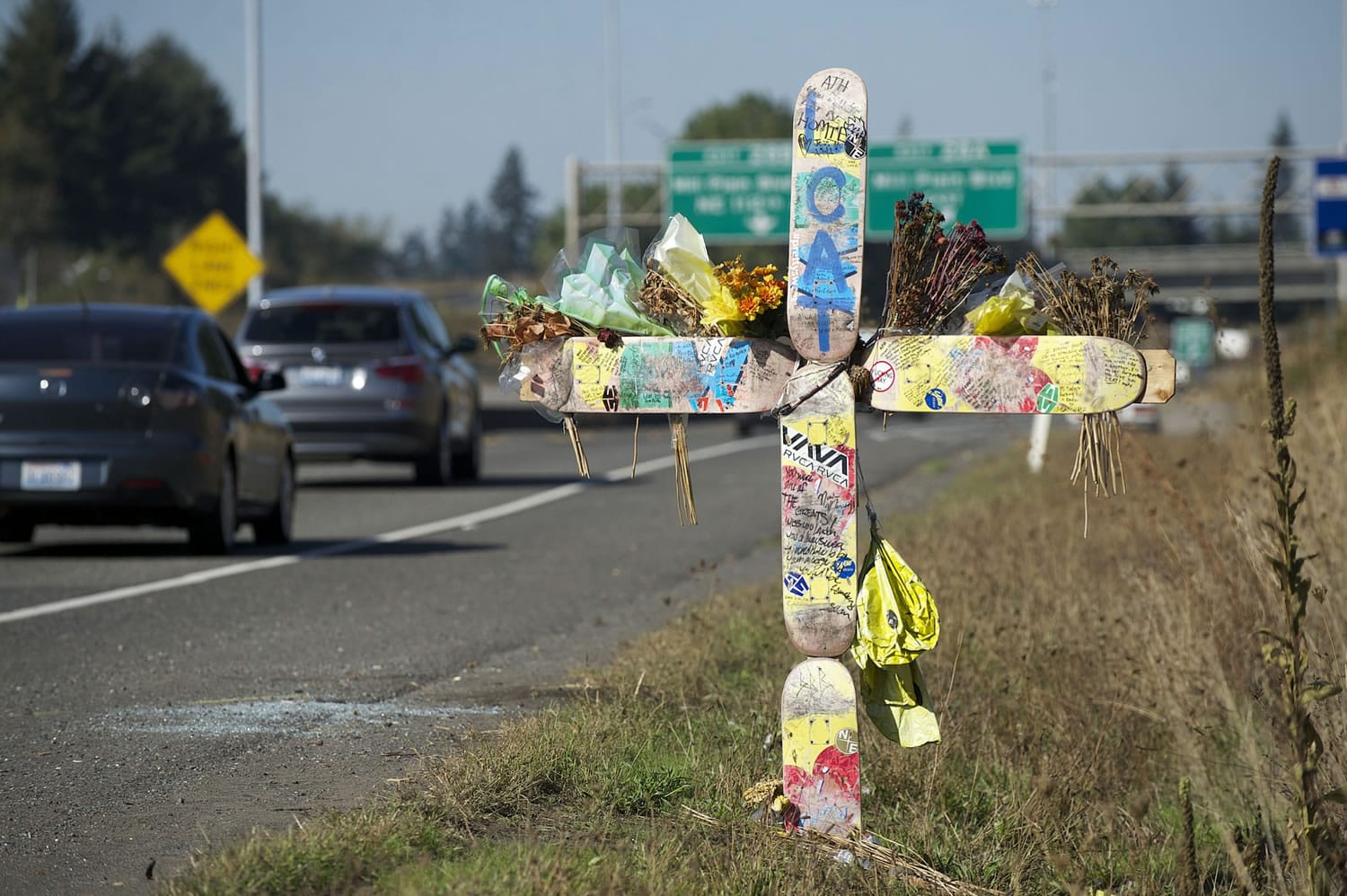A couple months ago a huge cross built out of skateboards went up right next to Interstate 205 below Mill Plain. It’s still there. In the beginning there were balloons and flowers attached. Are there rules about roadside memorials?
— Connie Monaghan
It’s understandable that some folks desire to mark the spot on the highway where a loved one died — as a memorial and perhaps as a warning to others. But according to Bart Treece, local spokesman for the Washington State Department of Transportation, those memorials can themselves be distracting to drivers. (And distraction when steering a ton or two of steel certainly equals danger.) Your question is proof, Connie.
“We really discourage people from setting up roadside memorials,” Treece said. “We don’t want people pulling off on the side of a high-speed roadway. We ask that they work with us.”
People who want to erect a memorial must contact WSDOT first to review the guidelines and agree upon a plan, Treece said. If the memorial is already up, WSDOT will check to see if it fits those guidelines.
The memorial should be as far off the roadway and as close to the legal right-of-way line as possible. Friends of the deceased must have the family’s approval. Live plantings are “strongly encouraged” while periodic visits to drop off flowers, stuffed animals, pictures and so on are “strongly discouraged.” Temporary plaques should be removed within six months. Other sorts of memorials must be gone within one year.
If the family cannot be contacted or agreement cannot be reached, Treece said, the state will “safely and respectfully” remove and store the memorial until it’s claimed.
But preferable to all of that, Treece said, is the state’s program to install DUI Memorial Signs that meet highway standards. We’ve all seen these — they typically say “Please Don’t Drink and Drive” and include the name of the deceased. Transportation has expanded this recently with messages about pedestrian, bicycle and motorcycle safety, texting while driving, seat belt use and speed awareness.
They’re not cheap — depending on the situation, the signs start at $500 for fabrication and installation — and those costs are paid by the requesters, not taxpayers. But once such a sign has been installed, Treece said, “It’s not something the family would ever have to worry about going away.”
Take a look at http://www.wsdot.wa.gov/Operations/Traffic/Signs/duisign.htm for all the details.
One more important thing: The Federal Highway Administration bans memorials on Interstate highways. It’s state highways only. If the site is an Interstate highway, the best you can do is the nearest offramp. Or, the state recommends, you might consider a memorial donation to a group or agency that advocates for traffic safety. The real point is to stop these tragedies from happening, right?
Treece said the state was not contacted about the skateboard cross that appeared along I-205 — which is beside the offramp. The state is trying to contact the family now, he said.
According to court records, early in the morning of Aug. 16, 21-year-old Ryan McGuinness was driving a car full of skateboarding-enthusiast friends home from a Portland bar when he tried mimicking a certain skateboarding maneuver. The car rolled over and one passenger, 18-year-old London D. Stoll, died at the scene. Only two of the six people in the car were wearing seat belts. Stoll wasn’t one of them.
McGuinness allegedly failed a field sobriety test and is facing a vehicular homicide charge.




